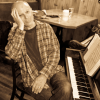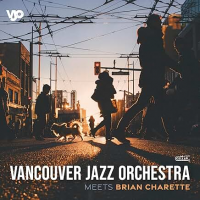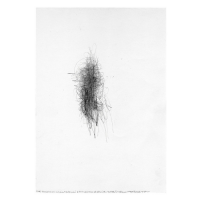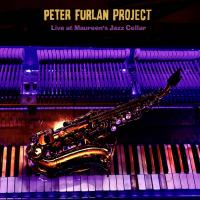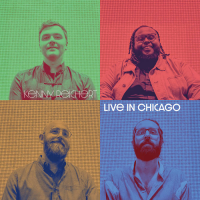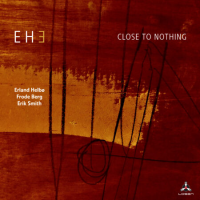Home » Jazz Articles » Album Review » The Band: Stage Fright 50th Anniversary Edition 2CD
The Band: Stage Fright 50th Anniversary Edition 2CD
Along those lines, it's fair to say this double set is worth having for the second compact disc alone. The recording of a complete concert at London's Royal Albert Hall in June of 1971 was only done on a four-track machine, but the streamlined polish on the twenty numbers is the lean, muscular sound of The Band as it became more widely known over the course of the decade, in stark contrast to the distinction of the horn-laden music as arranged by Allen Toussaint that comprises Rock of Ages (Capitol, 1972).
The various strengths of the combo are as prominent as the distinctive lead guitar work. Consequently, aside from the audience's recognition of individual songs such as "Rag Mama Rag," a tune that triggers no greater, louder crowd reactions than the three distinct singing voices of pianist Richard Manuel, bassist Rick Danko and drummer Levon Helm, or the instrumental versatility of keyboardist/saxophonist Garth Hudson (even apart from his extended solo near set's end, "The Genetic Method"). However fractured the bond of The Band had become by this point, the musical chemistry clearly remained.
It is an unmistakable impression also reaffirmed by some other previously-unreleased content in this package. Calgary Hotel Recordings, 1970 features an easygoing camaraderie between Robertson, Danko and Manuel that also belies the growing fractures between them during this period. Loose as are the renditions of tunes such as " Rockin' Pneumonia And The Boogie Woogie Flu"—reminiscent of similarly impromptu jam on the Festival Express of the previous summer—the shared sense of history is as palpable as the natural affinity the three hold for each other as musicians. However much personal affection might have been lost during the previous twelve months, that professional sort that remains radiates without question or hesitation from the two takes of the original "Get Up Jake."
But the previously unissued material isn't all that's novel about this version of Stage Fright, and that's where Robertson's intent becomes at least partially suspect. Contrary to any previous common knowledge about an early running order of the album's eleven tracks, the titular leader of The Band has re- sequenced them on the first compact disc here. In his essay in the enclosed twenty-eight page booklet, he maintains his first conception, meant to highlight the songwriting contributions of his bandmates, instead found disfavor with them. To further the end of compromise now, alternate mixes of Manuel's "Sleeping" and Helm's "Strawberry Wine" are included here.
Yet their appearance as bonuses only ends up rendering moot the question of which configuration of Stage Fright's cuts is more effective in the context of Robertson's self-serving explanation. Certainly, the new opener, "W.S. Walcott Medicine Show," picks right up where the vintage atmosphere of The Band (Capitol, 1969), aka "The Brown Album," left off, while, the earlier appearance of "Daniel and the Sacred Harp," with its parable narrative, plus the sole appearance of rotating vocals from Danko, Manuel and Helm—hearkens to the mystery of the group's debut, Music From Big Pink (Capitol, 1968).
Yet whatever gains derive from those changes become undermined to some degree by the remixing of the audio by Bob Clearmountain, a chore he also took on for The Band's sophomore album's anniversary reissue. In tandem with the remastering of Bob Ludwig, that engineering expertise does lend sonic continuity to technical work originally performed by both Todd Rundgren (who worked the boards during the original recording sessions at the Woodstock Playhouse) and Glyn Johns, he of The Beatles, The Who and Rolling Stones fame. The final result, however, even more than the prior sonics, only enhances the relative anonymity of the individual talents of The Band, who had redefined the premise of 'the whole greater than the sum of its parts' on the previous two albums.
In that regard, an indirect reference to The Beatles becomes more relevant than the forced comparison contained in the album review (sic) within the booklet (that might better have been omitted for more of the handsome action shots with which it's juxtaposed). Just as the Fab Four made the mistake of ostracizing long-time producer George Martin in amassing the double LP The Beatles (Apple, 1968), now known as "The White Album," so too might the group have once more availed themselves of previous producer John Simoninstead of relegating him to a mere instrumental sit-in.
Yet there's an even more apt comparison to Lennon, McCartney, Harrison and Starr, vis a vis their initial conception of their project that ultimately morphed into Let It Be (Apple,1970). That is, this reworking of Stage Fright does accomplish the honorable ends Robbie Robertson envisioned: the means by which the Band transcends its differences and validates its iconic status in the history of contemporary rock. It is a point well-taken, albeit slightly belabored, by this milestone release, which in most ironic terms, ultimately renders the newly-modified cover graphics appropriate: they are as distinctly different from the original art as the new presentation of the music is, even as the outside of the package itself makes no mention of the exact nature of its contents.
Track Listing
CD1:The W.S. Walcott Medicine Show; The Shape I'm In; Daniel And The Sacred Harp; Stage Fright; The Rumor; Time To Kill; Just Another Whistle Stop; All La Glory; Strawberry Wine; Sleeping; Strawberry Wine; Sleeping ; Get Up Jake (#1); Get Up Jake (#2); The W.S. Walcott Medicine Show; Rockin' Pneumonia And The Boogie Woogie Flu; Calgary Blues. CD 2:The Shape I'm In; Time To Kill; The Weight; King Harvest (Has Surely Come); Strawberry Wine; Rockin' Chair; Look Out Cleveland; I Shall Be Released; Stage Fright; Up On Cripple Creek; The W.S. Walcott Medicine Show; We Can Talk; Loving You Is Sweeter Than Ever; The Night They Drove Old Dixie Down; Across the Great Divide; The Unfaithful Servant; Don't Do It; The Genetic Method; Chest Fever; Rag Mama Rag.
Personnel
Robbie Robertson
bass, electricRichard Manuel
vocalsRick Danko
bassLevon Helm
drumsGarth Hudson
keyboardsJohn Simon
saxophoneThe Band
band / ensemble / orchestraAdditional Instrumentation
Richard Manuel: piano, organ, drums, clavinet ; Robbie Robertson: autoharp; Rick Danko; fiddle, double bass, vocals; Levon Helm: guitar, percussion, vocals; Garth Hudson; accordion, tenor saxophone.
Album information
Title: Stage Fright 50th Anniversary Edition 2CD | Year Released: 2021 | Record Label: Universal Music Group
Tags
About The Band
Instrument: Band / ensemble / orchestra
PREVIOUS / NEXT
Support All About Jazz
 All About Jazz has been a pillar of jazz since 1995, championing it as an art form and, more importantly, supporting the musicians who make it. Our enduring commitment has made "AAJ" one of the most culturally important websites of its kind, read by hundreds of thousands of fans, musicians and industry figures every month.
All About Jazz has been a pillar of jazz since 1995, championing it as an art form and, more importantly, supporting the musicians who make it. Our enduring commitment has made "AAJ" one of the most culturally important websites of its kind, read by hundreds of thousands of fans, musicians and industry figures every month.





